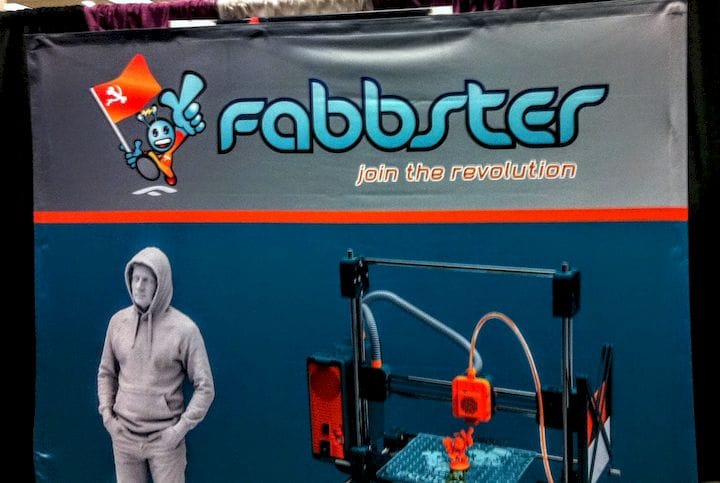![Fabbster, an early 3D printer manufacturer that shut down in 2015 [Source: Fabbaloo]](https://fabbaloo.com/wp-content/uploads/2020/05/image-asset_img_5eb0a55bbe6bb.jpg)
Many 3D printing companies have emerged since 2009, and almost as many have since shut down. What happens then?
For many it began in the 2009-2012 period where the hype over consumer 3D printing was at its greatest acceleration. Then, it seemed that in only a few years millions of citizens would be scrambling to buy their own 3D printer and do “something” with it. One needed only to launch their own 3D printer company as early as possible to catch the wave and build towards the big reward down the line.
Many people did this. Some still do, for some reason – although it is now far, far too late to do so.
In the beginning it was fabulous! Enthusiasts gobbled up desktop 3D printers to satisfy their hunger for replication technology, regardless of the quality of the product or its all-too-often absent post-purchase service. Many companies, even those with crappy products, reported consistent doubling of sales over short periods.
The future was unfolding well. Until it didn’t.
All of these projects were caught in the consumer crash where the public eventually realized that there really wasn’t yet a “something” for them to do with the 3D printer, even if they could afford one. Most 3D printer companies shifted gears and focused on professional or educational markets that actually would pay real money for 3D printing technology to achieve real business results.
Some companies did not make this switch and continued to focus on the now-saturated hobbyist maker market, to their peril. Most of these companies have now closed down or have shrunk considerably, perhaps on the verge of closing in the near future.
What happens to the people in these extinct companies? Do they disappear?
It depends on many things. One is the manner of their exit.
![Bre Pettis with Fabbaloo’s General Fabb in busier times [Source: Fabbaloo]](https://fabbaloo.com/wp-content/uploads/2020/05/image-asset_img_5eb0a55c387b7.jpg)
In the case of Bre Pettis, co-founder of MakerBot, things went reasonably well. Pettis was able to exit the scene before the full carnage appeared, selling MakerBot to Stratasys in 2013 for US$400M, an astounding amount even today, five years later. Since then he has been puttering with various maker-like projects, including one involving the production of high-quality objects targeting the heirloom market.
Pettis funded his post-MakerBot operation with his takings from the MakerBot sale, but that hasn’t been an option for many companies that simply failed without a buyer. Their paths have taken many turns.
![Sam Cervantes, formerly of Solidoodle, now with MakerGear [Source: Fabbaloo]](https://fabbaloo.com/wp-content/uploads/2020/05/image-asset_img_5eb0a55c960b6.jpg)
Some have taken roles at other 3D printing companies. Sam Cervantes, CEO and founder of the now-defunct Solidoodle 3D printer manufacturing operation, again works with MakerGear. Good 3D print talent is often hard to find and thus successful companies quickly scoop up available skills.
![Printrbot’s Brook Drumm during the boom [Source: Fabbaloo]](https://fabbaloo.com/wp-content/uploads/2020/05/image-asset_img_5eb0a55ced158.jpg)
Printrbot, one of the early and most successful desktop 3D printer companies owned the DIY market for years, but for some reason never made the switch to professional markets and subsequently were overrun by inexpensive Asian equipment. They shut down earlier this year. Their CEO, Brook Drumm, now operates a Patreon service to provide exclusive videos for the maker community. Drumm says:
“I dove head first into the 3d printing community in 2011 and founded Printrbot with a Kickstarter that went crazy. Its been a wild ride! The Printrbot team built and sold 50,000+ 3d printers, we traveled all over and met thousands of people, and I was part of a TV show on the Science channel…it was nuts.
I invested everything into the business. But, I made mistakes. Cheap competition crowded the market, the hype fell off sharply and the whole thing blew up. I lost it all.
I learned a lot.
I’m moving on.“
![The founder of the now-defunct 3D Printshow, Kerry Marks [Source: Fabbaloo]](https://fabbaloo.com/wp-content/uploads/2020/05/image-asset_img_5eb0a55d4257c.jpg)
Some with skills not specific to 3D printing, such as marketing, sales, administrative or similar, have frequently found roles in other industries, leaving the 3D print world perhaps forever. One of our good friends, Kerry Marks, leveraged her trade show organizational skills developing 3D Printshow over six years into today running successful virtual reality shows and a growing music festival.
![The Fabbaloo team at a 2014 3D Printshow event with Kerry Marks and RichRap [Source: Fabbaloo]](https://fabbaloo.com/wp-content/uploads/2020/05/image-asset_img_5eb0a55d8ac49.jpg)
The 3D printing imperative does remain strong in some who have exited failed or sold off companies. I constantly bump into departees who are busily developing (hopefully) revolutionary new 3D printing technologies. Their experience in prior operations makes them particularly valuable for new ventures, although it is now far more difficult to raise funds for new initiatives.
And finally there are other individuals that just seem to have disappeared altogether. I’m sure they’re not dead, it’s just that you cannot find any information about them and never seem to encounter them anymore.
For all of these people who once held the dream of universal 3D printing, whether they are still at it or working elsewhere, that dream still exists.
It’s just taking a lot longer than everyone thought.











Women in 3D Printing is pleased to introduce its first annual conference.